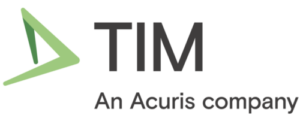Compliance Update – September 2018
26th September 2018This month we answer two questions:
- For 10 or more years, TIM has been a standalone web service. Increasingly, both buy-side and sell-side are integrating internal systems with TIM. What is driving this?
- With the regulatory-driven squeeze affecting most brokers there are fewer sales people. Yet the number of TIM contributors is rising. What is the cause?
Increasing integration with internal systems
Almost every buy-side that pays for ideas now links to TIM (alongside their proprietary platform where it exists). They maintain the link to TIM primarily to meet broker demand.
Brokers prefer to use TIM as their single platform for distributing ideas because:
It’s compliant and fair – ideas reach all clients at the same time
Restricted lists can be embedded in TIM, but not in a client portal
It’s simpler and less prone to error when only entering ideas once and they can manage them all in one place.
Some brokers have decided to use an internal portal to enter and manage ideas, linked to TIM. A good example we have seen is embedding alpha capture screens within a sales desktop. This allows the sales person to enter and monitor their ideas alongside their other activities. Therefore, brokers can maintain access to TIM’s key features, such as Programme Health management capabilities embedded within their internal portal.
Increasing broker demand has triggered an evolution of TIM’s programming interfaces. We have recently released a new set of sell-side APIs to streamline the way a sell-side can integrate TIM with their internal systems. Please do contact us to find out more about these new APIs.
Broker squeeze
As many forecast, we have now seen several smaller brokers shut up shop or merge with larger rivals in Europe. Here are the reasons:
The buy-side generally made a decision to pay for research from P&L, reducing research payments to brokers significantly
Perhaps not as originally forecast, but known now for some time, larger brokers made a decision to protect research market share by making access to written research very cheap
Independent Research Providers are completing the squeeze from large brokers by competing at the low end
Trading has migrated to lowest-cost, generally larger platforms.
All these factors have meant smaller brokers have found it hard to price research for a profit, and very hard to attract useful trading volumes. We’re also seeing that most large brokers are reducing staff numbers. “Bulge bracket” no longer seems a useful term. Tier 1 firms are really rather trim, and in many cases have a similar profile to their mid-tier or Tier 2 cousins!
Rising alpha capture participation
Against this backdrop, it may seem surprising that TIM contributor numbers are rising. We now have 3331 contributors from 323 firms, a rise of about 10% year to date. These are what we believe to be the reasons for this seeming paradox:
Every remaining salesperson must drive revenue, and alpha capture is one of few off-balance sheet, stable revenue streams. So we are seeing higher levels of participation among sales teams
Some brokers are expanding. Specialist houses, or those with particularly strong franchises, have been able to increase team sizes. The most successful firms combine a strong research franchise with good trading technology and a focus on specialist sales for alpha capture.
It’s becoming easier and possibly more lucrative to set up as an independent research provider, with several umbrella organisations springing up to make it straightforward and attractive to set up on your own or with like-minded colleagues.
These new and expanding firms are all of course attracted to the revenues alpha capture can provide.
Do you believe there are other factors at play? If so let me know at colin.berthoud@acuris.com We always appreciate client feedback.
